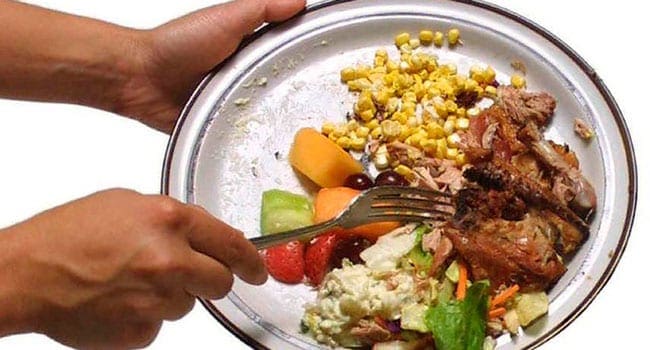Look, smell, taste a recipe for reducing food waste
 We all know food waste is an environmental issue, but it’s also a significant financial burden. According to Second Harvest (which collaborates with thousands of food businesses across the supply chain to minimize edible food waste), nearly 60 percent of food produced for Canadians, amounting to 35.5 million tonnes, is lost and wasted annually. Of this, 32 percent or 11.2 million tonnes, is still edible and could be redirected to support people in our communities.
We all know food waste is an environmental issue, but it’s also a significant financial burden. According to Second Harvest (which collaborates with thousands of food businesses across the supply chain to minimize edible food waste), nearly 60 percent of food produced for Canadians, amounting to 35.5 million tonnes, is lost and wasted annually. Of this, 32 percent or 11.2 million tonnes, is still edible and could be redirected to support people in our communities.
The total financial value of this potentially rescuable food is an astonishing $49.46 billion, and we all pay for this waste.
As consumers, we waste food for various reasons, including poor planning and weak inventory management at home. However, one major issue compelling many to waste food unnecessarily is the “Best Before” dates. These dates are the second most significant reason consumers throw food away in their households. It is estimated that a Canadian household could waste $100 to $400 worth of food each year because of the overwhelming belief that “Best Before” means “Bad After.”
The Look-Smell-Taste initiative, initiated recently by the social impact company behind the food-rescuing app Too Good To Go, aims to address this issue. Starting this week, some selected items across the country will feature a sticker inviting consumers to look, smell, or taste a product if its “Best Before” date has passed before throwing it out. While the “if in doubt, throw it out” rule remains a benchmark, this new campaign could help save many unopened food packages that would otherwise end up in the compost, costing money.
The initiative is welcome news for Canadians. It’s about awareness and education, but mostly about trusting food safety practices in Canada. According to the Global Food Security Index, Canada is the top-ranking country in the world for quality and safety, followed by Denmark and the United States. Despite occasional recalls and setbacks, Canada’s food is among the safest in the world.
Another significant factor is packaging. Many years ago, packaging technologies were not as advanced as they are today. Recent research has greatly enhanced food safety. New packaging technologies, including antimicrobial packaging and modified atmosphere packaging, have significantly improved food safety by providing better protection and monitoring of food products. Smart packaging technologies, such as time-temperature indicators and freshness sensors, allow real-time monitoring of food conditions, ensuring that consumers receive products that are safe and of high quality.
These advancements reduce the risk of contamination, spoilage, and foodborne illnesses, thereby improving overall food safety throughout the entire supply chain.
Most consumers cannot appreciate all the work done behind the scenes across the supply chain, but that work ensures food is as safe as it can be at retail. However, the consumer is the most important risk manager of the entire food supply chain. Ultimately, it is up to us to decide how to mitigate risks and what we consider an acceptable risk threshold. Our risk society has made risk perception a very personal issue, and food safety is no exception.
A survey by the Agri-Food Analytics Lab at Dalhousie University last year found that about 27 percent of Canadians would eliminate “Best Before” dates to reduce food waste. This minority suggests that Canada’s food safety culture and reliance on indicators like package dates are strong.
Additionally, some consumers seek out these dates for deals on expiring foods at grocery stores and through apps. It’s hard to argue against this practice.
In the meantime, we need ongoing education and awareness. The Too Good To Go’s ‘Look-Smell-Taste’ initiative offers a balanced approach to addressing our food waste problem in Canada, at least for now.
Dr. Sylvain Charlebois is senior director of the agri-food analytics lab and a professor in food distribution and policy at Dalhousie University.
For interview requests, click here.
The opinions expressed by our columnists and contributors are theirs alone and do not inherently or expressly reflect the views of our publication.
© Troy Media
Troy Media is an editorial content provider to media outlets and its own hosted community news outlets across Canada.


